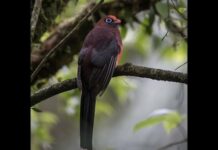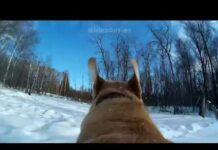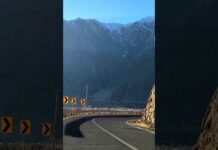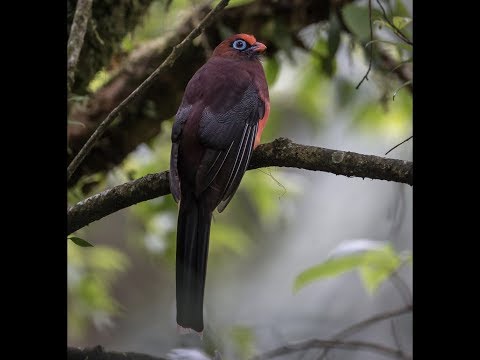Date : 31 Aug 2017
Time : 7.30pm – 8.30pm
Location : NSS Office
Open to the Public
Synopsis
Stretching from the Siberian taiga to the humid rainforests of Indonesia, Asia is a continent of great contrasts and home to more than a quarter of the World’s bird species. While some of these like the Philippine Eagle and Spoon-billed Sandpiper are now very well-known thanks to considerable conservation publicity, many species remain poorly studied, and often confined to remote parts of the region. Through his extensive travels, Yann Muzika is fortunate to have personally observed up close most of the continent’s birdlife, including many of its most threatened species. In this talk, Yann will share with us 25 of the most memorable species he has encountered. One of these birds is the mysterious Sillem’s Mountain Finch, rediscovered by him on the western Tibetan Plateau after having gone missing for nearly a century. Yann will also relate his experiences working closely with local conservationists across Asia to save some of these threatened birds. A talented wildlife photographer, Yann’s talk will feature many of the spectacular images he has captured from the wilds of Asia.
About the speaker
Yann is a French birdwatcher and wildlife photographer currently residing in Hong Kong and has been based in Asia for almost 20 years. Yann regularly contributes his images to the Oriental Bird Image database, as well as a number of online media, books and magazines. Yann has travelled widely across Asia to document the continent’s birdlife and biodiversity. On one such expedition to a remote part of the Tibetan plateau in 2012, Yann photographed and rediscovered the long lost Sillem’s Mountain Finch, an enigmatic species that had not been seen since 1929. Besides his photographic work, Yann also contributes to a number of bird conservation projects in Bangladesh, China and Indonesia.
Go across into Malaysia that's far from here and Ponte you'll find a few but this is probably one time to my opinion is it best are the most beautifully looking truck that you can find it's a mountain bird meaning of the mountain slopes it takes the little bit of airports but it can be seen on the slopes of Mount Kinabalu Sabah in.
Troubles are not abundant birds they don't they don't come in frogs but if you spend time walking the forest trails there you'll end up begging being lucky and seeing one of those beautiful birds staring at you sitting on a branch if you behave properly actually if you don't make too any movements if you just wait those risks can be very very tame.
And actually it's gonna quit very very close to me there are very beautiful birds who actually fortune up sir and there was the next home bills you have – bill and black on the area right where you know there are quite a few more to go across into Malaysia probably ten species or something I have a few more being funding the north and if you.
Go eastward across the Philippines you will find quite a number of species which are endemic to the Philippines and some of them being actually endemic to a few islands of the Philippines this is a Walden's home bill it is found only in the Western Visayas so if you tell me everything yeah Philippine Archipelago.
Were the big island in the north is who's on the big island in the South has been that out and in between 20 metric at the Visayas the mayor that we diocese Negros for the forests have been taken down their baleen so it's probably extinct from neighbors and you need to go to the neighboring island of Panay where hopefully there are still some.
First remaining situation is not great to see this bird it's a critically endangered bird so it's one of the most striking hornbill you can find Cory sitting next to its neighbor thus whoo-hah meal for the sauce yeah occupy go it takes a little bit of a walk to find the bird but there are a few pretty reliable places on the island.
Of funny where where they can actually seize upon this we're still in the Philippines we wish to change genus we're not talking broad bills again the family which is found mostly in Southeast Asia pretty popular family and photographers bushes and this is a V science global so we're in the same area as home built but we're in the.
Eastern part of the archipelago is be taken on the island of somehow and it's it's a rare earth it's not a bird that you get to see very easily it's a very inconspicuous bird the species you find Southeast Asia are pretty vocal and you can locate them by voice prints and it is very silent so it took me quite some time to actually find it so this brought.
Me here in Portugal is also pretty small I decide on the black and get abroad there roughly so it's not a big large size bro we have the good thing with this birdie that once you find it it tends to sit on a branch for a long time so you just have to you know be very careful move slowly try to find the good angle and then finally you can you can.
You can get a picture definitely pick it up as one of my favorite group builds occurring in Asia events on body or you have some very very good competitors you probably heard about the whiteheads broadbill and the hoses broke a large window this which are also beautiful but just happened that I have a better picture of this one so that's the one.
I'm showing back down this science pop bro bill next word is going to be very popular genus family of birds it does we're actually having suspicions here here with us but there had to be about 25 great girls of Asia there had to be a pizza I'm contending that it is one of the best with us.
This is the top three of the best speakers you can find in in Asia this one is a blue band ich bitte did I say it right many speakers it's an endemic of Borneo so it occurs in dynabox our work in Kalimantan it's a kill birds that we found in the lowlands it's that we found in higher mountains it's on few slopes as pre Schieffer like old beta it.
Takes some time but in the end if you get lucky you them they'll get to see you get to seek well control what is your favorite Pitta of all them all the tree species also this Christmas Eve you know your mama doesn't know is it's not a bird that has a particular conservation concern Fidel still considered relatively common even so.
It's always very hard to find this is a bit of the north it's a white week I said Japanese one swing to be precise there are three species of wax wings to Bing quality by the Arctic north buddy Arctic and won the finals in America this bird is properly named actually Japanese what's wing because doesn't.
Greet in Japan if only winters Japan and not in huge numbers so it's basically the Japanese island of the jungle food are in Singapore right if one turns up or frog turns out and a lot of people would be after it I was very lucky to find a flock two years ago right at the bottom of Mount Fuji on the shores of Lake.
Yamanaka cool if you happen to have traveled to Japan I was in winter there was a snow around it was a beautiful day and there was a spark of absolutely cracking birds around they actually breathe in South East area and horses China they also found in winter around Beijing they're also very very popular birds but again that's a kind of person.
Can't really rely on because they are very romantic very unpredictable just like the Jumbo food up they turn up in a place and the next day they're gone sometimes it might stay a few weeks in an area it's really rare so they move around a lot and seeing what actually takes some effort it's a miracle venerable bird I think so it has a.
Little concern it's a nice way that the young situation in terms of conservation is is not great well even so if you look at the breeding habitat they are probably still are quite a few for standing its our system severity right we're moving to the real banners you all familiar with poplars you know there are a lot of them it's.
Difficult to pick one I picked a bird which is endemic to Vietnam which actually is also improperly named short tailed scimitar banner but actually status father is probably more like a lonely field Rhett Butler I really should come here whispers it's a grown father basically a pillar on it they know they work with just coax which.
Hurts the ground which is pretty uncommon and I was very very lucky to actually get this opportunity to get one hopping onto the log I was actually not aiming at this bird when I took the picture I was aiming at the Lovings brush which never turned out I was I was quite happy to at this one this one instead it's you Jesus is Jesus Larry.
Called Shibuya named from French authorities we have a few of them and actually had a scissors pieces which has been recently found in northern Yanmar which might or might not but so kidnappings a lot of great birds a lot of Anthony burns and this is a pretty truck dr. Burgess to Crockett to see so very very lucky in that happy to.
See this want to take a picture very nice just checking the young the state is essentially an ER threatened bird but rather call it the death of a fishing derby with not much is known in terms of population exactly solution so you would say any come to its sensual yes what's the name of the bill so it's.
A short tail skillet our butter short tailed like a shorter butter that's our ste I am i a or all right you see the thrush this is Street Uncas rush sri lanka so it's an engineer bird eternal God is nice island south of India which is quite a number of endemic birds this one being one of the most difficult to to see so again.
Very happy to see this bird and Nexus picture together is actually mr. Lowe and mr. visit were sitting here who actually brought me to this bird so they're looking in her direction when the bird turned up and they are very kindly brought me to this bird and the amazing because Russia's are pretty shy birds this bird just starts for what.
Five ten minutes without moving on this branch are giving us an incredibly crazy look taxonomy obviously like it so it belongs to the whites fresh flash scale is fresh complex it's a lot of species in there don't know how many is to be seen as just one bird and then people started to split those birds into different species.
Basically the white thrush which is a migratory bird reading up in Siberia and flying through China the winter in Japan and further south into into the Philippines and then you have a number of very similarly looking birds or scaly rushes which are actually residents in only four in certain areas one of them is meaning to sri lanka are one of them.
Is end to the new year in mountains of south india there is one ending to indonesia the hotel thrasher is one addicted Taiwan recently found that tsunamis don't really know whether it's probably species going ball they look pretty similar event so this one is very very distinctive with a very known for being.
A very Buffy teach on the of the port of the other we present and also also young sports there has to be a few Robins as well this is by rote virus Road which is a burrow which is a breeding endemic of China only breeds in China in central western China forest each one is for with the epicenter of the breeding.
Branch if winters further south shine Afra your own way to northeast India very tough to find in winter actually there was a bird before spawning off in Thailand recently wintering and it was one of the first observation there even though it probably breeds it's fairly good numbers is part of the winters in fairly good.
Numbers in in this area is very hard to find in now in winter so your best chance is to go and see all the breeding grounds this was taken in a place called bong Chun in the National Park of the world which is prettier from Chengdu world is mostly known for being an area for a giant panda there is a beautiful forest there and if you look for this.
Bird around 2500 3000 meters in the forest if you listen for its song spring then you have a chance to to actually see a pretty stocking birds like all Robins but of course if you do a little bit a little bit of playback the male will get hers and come and see you maybe like in this dish give you a great photo opportunities fire salt it's a.
Near threatened bird but very not endangered but not a big population leader but my favorite Robin is probably this one it's not called the Robin Hoods short winged boots short wing same family as a Robins it's actually unique in its genus it's a bird of the yard south of the sorry.
Eastern Himalayas it's found in northeast India it's also Indian beaux-arts the extreme southwestern unum so in areas which are not very visited also a verb which is very hard to find in winter there is Cal convert and it breeds actually unlike the first word which will breed that the forest this bird breeds actually above the treeline.
So you have to go up to 4,000 meters high to actually have the chance to find this bird reading basically among voters and weekend there is no more extreme around there this was taken in an area called syllabus which is in our nature pradesh it was taken 22nd of May I remember well the list they can just write when the first birth.
Start to arrive in breeding grants and I was actually very very lucky to find a birth on that day we went one day up there after a few hours we thought that the birds had now arrived so we started to be very depressed and of course the next thing is that the clouds started to rolling so we couldn't see five I couldn't see Kim Schuette news just you.
Know that bed I still you know decided wait a little bit for my dark and then for some reason the clouds lifted and then I saw a bird on the ground I waited a little bit I just jumped on the rock and I could take her pictures it was really one of my luckiest pictures right would whiskey but if you picture.
Economics we're going to to recover them later that's the one know what this bird is all right so it's a it's actually a steel a malted peach it's a bird I was very very lucky to rediscover five years ago now in western Shanghai so basically on the Tibetan Plateau five thousand meters elevation I was doing a.
Track I had my camera I saw a bird took a picture I didn't know where he was I was very tired at the moment I didn't really care about it came back and looked into the books and so this might be these birds so I send my picture to chriskiss Mirza who is running the or into a bird image website which you might be familiar with and within ten.
Units he replied to me say I think just rediscovered students Moulton Finch and actually I didn't put the picture of the melody with the picture of the female because at the time of the rediscovery when you have a mail route light because specimens had been collected almost 100 years ago but we didn't know how the female looked like so this is actually a.
Female student mountain finch and later on taxonomist stepped in and looked at this bird actually the female of this bird looks very much like the female of the tibetan rossovich and they found out they actually the students what if it was not a mountain anymore that was actually more the raw speech another unforeseen speak of the.
Male has no pink at all so the status of this bird is data deficient for the simple reason that there is only one locations where this bird is known which is the exact location when I saw it a few adventurous birders went on to try to see this bird they only saw it an exact same location the exact same GPS spot or within a few hundred meters.
Wrong I went back to the area that year after we discovered it I explored a wider area with different slopes different valleys and I couldn't find another place where this bird was occurring I think a few birthdays tours when especially to see this bird they were able to see the game in the same location they were not able to see.
Anywhere else so very mysterious bird it occurs it's fights are the mirrors and for the above possibly the highest bird in terms of elevation as you already can see the primary projection the wings are very very long almost reaching in the young the tip of the tail to basically give the ability of the bird to fly a very high elevation by the air very soon.
So it's a well it's not very spectacular but it's an interesting his sealians molten fish right this is a bounty this is a yellow-breasted burnt e-mail this picture was taken in eastern Mongolia in June so on the breeding grounds but we're singing and we're pretty easy to spot it's a bird which had catastrophic decline in terms of.
Population over the last 20-30 years it used to be truly abundant you used to have wintering flocks of pockets Birds it's not more in Indochina in southern China in Dolphin Thailand but the population window crashed very very quickly mostly because of one factor because of trapping for food it's actually a delicacy in South China.
And people are getting richer and richer we're able to put more and more money to actually he just one bird and of course there were farmers and people in the countryside were sitting outside and Miss nets to trap his bird it is no listed as endangered how much of the population remaining it's really unknown the problem with the pass rains.
Is that it's very difficult to actually evaluate the population of the pastoring a shore bird large bird you know you can't figure out because you know where to look for them the ranch of this bass range is so wide and large so it's very very difficult to make an estimate of the population one thousand five thousand ten thousand.
Twenty I don't know nobody actually knows about weights for sure in that where the birds used to walk here in hundred and thousands they're almost completely gone and you only see smoke drugs nowadays this actually was the cover of Fortune magazine right problem is no the problem we skipped a few pictures we still have.
Time right so putting its I hope we can fix it with some help they are teaching that not 1270 was 49 she's freaking champ meanwhile if you have any question about this please ask yes sure 600 sometimes an extender sometimes without but yes most of these pictures.
Have been taken with with long lengths trying to think about a picture where I didn't in a long glance but I can't really think of any I wish the birds were closer but in most cases they were not probably the young the the severan crane I could have probably shown a picture was taken with a little bit of a wider angle even so.
When you're shooting at night we are the backdrop of the shins and buildings and you know skyscrapers so you don't want to have it too why either you've never done it so well but the other birds yeah I can't think of a bird that comes really close enough around for wider net even so as a photographer I'm much much much prefer when I'm given the.
Opportunity to be able to take a picture wireless yes yes it's actually might just stay where it is okay there's no weak weaker there there is snow but there's not much snow I mean we're not we're not talking all Qaeda or not you know but there is a little bit of snow coming and there is a lot of wind so we is actually growing.
The snow into certain areas and other areas are actually completely devoid of snow so most probably they still hang around they probably move a little bit but it's certainly don't migrate it's like pasty hemolyzed army – yeah we're not talking about anything like that there might be some movement but they will be able to find stuff on the ground.
Typically dry seats and that's probably what they are no I mean again it's there in our situations in this region where it might have a strong snowfall which actually might spell trouble for those birds but in most of cases there will still be areas where the weight is strong enough to blow it away and whether we'll be able to go between the.
Rocks and pick up the few seeds again no I've been there in winter there is not much though there is some snow other subgroups and those more on all soon it's definitely very cold there's definitely a lot of ice there's no more really water running or or anything but even during the day when the when the.
Sun comes the water dripping so that probably I go to a drink of it from that and for the rest I think they just pick up the dry seas it still has to be a phone nobody has ever seen this very winter to be treated so before it goes about to be that would be my back but I don't think was very fun intubation.
Right we're covering the last three words this is your turn obviously it's a Chinese Crested Tern another bird which was actually thought to be extinct for quite a period of time 40 50 60 years before it was rediscovered more than 10 years ago it's a bird that breathes basically in southeastern China somewhere between the.
Coast of China and Taiwan or we had a much bigger distribution ground the distribution wrench in the old ages but it shrunk a lot China developed artificial men were able to go and onto all the small islets there were probably taking the eggs of those birds and they were literally thought to be extinct for a long period of time until a few birds.
Were found yeah in fact early more than ten years ago and then a very bold conservation effort was put together by conservation people especially based in Hong Kong to actually try to protect those birds go into the fishing and tell them not to take the eggs anymore try to identify the islets where they were still draining and protect them.
From any people to to and PBX they try to stimulate breathing by putting decoy birds on on the islands a technique that actually works attracts birds to comment great on a given Island but even with that the population of this bird is thought to be around 50 Birds 5-0 so it's a variation this picture was taken in in China it was.
Taken on the estuary of the mean river being Jones in Fujian – far from Pooja it's actually an area where the birds gathered before the breeding so if you go there and then through May and you go on the sand banks which are accessible when the time is no there is a good chance you'll find a few of them mingled together with the birds on the right.
Which are greater crystal turns which are much more common and you can easily see the difference in terms of basically the winds and a mental be much much better on this bird and the back of the bill I was very very lucky to be able to approach this flock of birds as the tie was rising and coming in and they even gave me a little bit of a display in.
Question 20 meters I was uh I was lying on the ground I I made a considerable airport actually yeah just I know movie I took me an hour literally to come back because that's smashing ground cuckoo another birth that was so extend or that was sort of lost for almost a hundred years specimens of this bird were.
Collected in the early 19th century and early 20th century on the island of Sumatra but the melody we knew where exactly they were coming from nobody actually saw them in the wild meanwhile further were thought to be the same species of the ciborium brown cuckoo which is for money out of the Palio then people look to dismiss in.
Saying that it's a different bird socially a bit smaller and the color is a bit different so it's definitely listing species but people didn't know where to look for until I think it was in 2006 in the karijini national park camera trucks were being sets to actually monitor the activity of mammals especially tigers and people looked at.
The picture that was taken by the camera so these bird actions what is that so send the picture to someone ethology to say well this is a symmetric ground cuckoo the interesting thing is that the location on this camera truck was known and of course quite a few ornithologist when they're trying to look for the but never found it never found me two years.
Three years hackings with couldn't find it in another location about 500k meters in the cells in an area called Bukit Barisan telethon so we're talking about South Sumatra no authorities called Nick Brickell came in contact with earth trappers and a bird truckers show basically what he had in the cage it was a symmetric gone cuckoo.
So finally you found the birds we asked the trapper to bring into the place where I found the bird which he did and was able to see it in the wild the bird trucker actually became a bird guide make some money with trying to go and see this bird actually since then it was found finally the kerinci area I think two years ago so there are no two.
Localities where I can see this bird one in the mountains of central Sumatra kerinci and still in this location okay Barry sunset and I spent quite some time to take this picture it's a picture I'm not completely happy with simply because the bird was way too close I wanted to jump on the log around here I was happy I could roughly focus it but as you can.
See the tail is the legs is that there's no problems with an expected picture you can just wait to close it lasted a few seconds gone an amazing psyching I would say it's a very very lucky but very hard to see even so it's fairly big it's 55 centimeters but it's gulfs it's always in the in the thick vegetation almost.
All right that's an old we need an old I took a very very cheap one but that you might be familiar with the Oriental Bay old maybe you know that polls are actually divided in two families one of the typical oils like the scuffle and the holes and and another family is the if the bar poles so all those masked or basically and this is one of the.
Smallest of this of this family is one of the generals of Southeast Asia it's not a rare bird so to speak but it's a very difficult bird fine sorry it's a difficult word to the crack it's a it's a bird that you will hear and then we'll try to locate but it really stays in to basically big tickets if you love tangles of of lioness advice any.
Particular never purchased on an oriental branch it always purchase basically on the trunk on the side of the truck that's because posture for this part it's bird it's a picture that was taken in Thailand can catch on but you can find it very in Malaysia you can find this but in Borneo you can find this.
Bird itself in China the quite a number of places where the bird actually occurs but again singing on sound yeah thanks so much work I think we're down the young for missing hurts and yeah any question it's good about seven minutes yes so two thousand three hundred some-odd birds that we've seen how many of you.
Photograph other video verse two thousand so I'm missing two hundred something I keep accounts no I just but the more I take pictures of birth the more enjoyed watching it actually recently I supplied myself going out to see birds without a camera and actually enjoying it so camera users show to used 600mm can so I think most of you would.
Probably use a tripod he fools around without tripod so that's why be able to go such long distances to capture the bat so basically just six hundred sheep carry that lends the body of the poorest work I've gone up between numerous times as how we can help 600 image right with a tripod central office a situation the ground cocoa is thicker was a tripod.
Each time I've basically is register seated white much better off it's a try but I can tell you come just stay like that to our thigh just not do that but it's true that not having a tripod to be able to carry to carry their legs around and cover bigger distances yeah you have to find ways to actually use your everybody try to stab like you're on.
Your legs but he doesn't he doesn't need it 600 millimeters to take good pictures I think that that's all somebody I want to say I friends who are shooting with 400 with 300 much shorter legs much lighter Lance and they're very very good results I showed you the picture of the Western traffic man I mentioned about my friend Jana Corrie a cozy she's a woman.
She shoots with a 500 she and holds also the lets she's very very very good at that so you know it's not a matter of stress if you get used to carry the thing if you find the right balance you can basically take McShane you don't need necessarily a big lens to take the pictures I phone there's been only me anymore.
Kristen's yes right I mentioned that about I think that white-bellied heron yeah I mean do spurts three or non-readers which are forest on both sides so they basically use the river the way to feed you know the running water the catch fishes and they use the the trees to basically make their nest when there is a dam.
Everything is floated basically the river is not flowing the same way anymore fishes of species of fishes that they were feeling are disappearing the trees are being cleared on the side of the of the river is basically the habitat this really change in a way that makes it impossible for the for the girls who keep on breathing.
Unfortunately and the other question all right well very much I'm office busy but it's tell you you know this very interesting talk so hopefully are you seeing hopefully see more you are you taking some Rapids so I think to show token appreciation little book from big me and hope it is a.
Foot race alright so I think it's not announced yet but October it will be our annual a Singapore Padres there with three categories all right three categories one this won't be the we have a marathon race or a gosu fancy doing a 20-hour race okay talk about marathon marathon race.
And those who can spare the times we have a sprint event sprint race so you have what if I always you spring around Singapore right so that is second category and you have a Hoosier photography category as well all right so three categories for you to pick so that will be on October it so to look up oil in the newsstand please.
Pause all right sorry sorry I'm just sick here is like what should be viewed to begin one thing for this game I mean I don't know I was when I was younger like a teenager I went out birding I was raising friend's father like going out and I liked it and then I got very busy with all the studies and stuff and working it but I.
Hope we could give up for more than 20 years I found myself in a little bit more time suddenly I just came back to that I don't just think just now I was lucky to meet you know people also help me I mean you know when you were self restarting something I was not very particularly good watching at the time when I started you know being.
Interesting in the game and I just just just build up there are lots of great people I'm sure also here in this room I mean it's a I show you work as being my work but most of the cases that was actually with people doing that local guys showing me the birds people travelling with me sharing expenses of time that I was not the one who to find.
The person with someone else was next to me from the bird so it's it's also a group thing something that you knew that you do is friend that you do with the OSB boys we're going to begin the watching that won't be there many kids about how to actually begin in such a pair of binoculars.
this weekend is super cool has a better watch it well you start with something like that repairman hookers you go up and you change yourself each bird that you see you try to put the name of it try grad at the fight then you go with someone else again I mean you learn with.
All the people will see you don't learn by yourself only it's not true so try to find all the people you know to go with people more experience and you will belong very very very quickly much better than just going on thank you what are you going up sit down on my car for us.
Is there any target Wow afternoon before there's just trying to battle with a good time okay anytime Oh
We are excited to present to you the captivating video titled “Part 2/2 – Talk: 25 Great Birds in Asia”. Get ready to embark on a journey of enjoyment, smiles, and laughter as you watch this delightful creation. “Part 2/2 – Talk: 25 Great Birds in Asia” is a perfect blend of entertainment and amusement, carefully crafted to bring joy to your day. From the moment you press play, you’ll be greeted with a cascade of lighthearted moments, heartwarming scenes, and perhaps even a few surprises that will tickle your funny bone.
Whether you’re in need of a quick pick-me-up or simply looking for some light-hearted entertainment, “Part 2/2 – Talk: 25 Great Birds in Asia” has you covered. The video promises to deliver a collection of moments that are bound to leave you grinning from ear to ear. With its engaging content and skillful presentation, “Part 2/2 – Talk: 25 Great Birds in Asia” is more than just a video – it’s an experience designed to brighten your mood and spread positivity.
The creators of “Part 2/2 – Talk: 25 Great Birds in Asia” have poured their creativity and dedication into crafting a visual treat that resonates with audiences of all ages. Through expert storytelling, impeccable timing, and an array of engaging content, “Part 2/2 – Talk: 25 Great Birds in Asia” promises to be an unforgettable journey that lingers in your memory long after the video concludes.
So sit back, relax, and prepare to be entertained as you dive into the world of “Part 2/2 – Talk: 25 Great Birds in Asia”. It’s a delightful video that aims to bring a dose of happiness to your day, leaving you with a lasting smile and a heart full of laughter.
This video was uploaded in youtube and has recieved 46 views so far. This is a great achievement and laso it has received 0 likes and .
Data bout the video:
Rating: ,
Video dimensions: 2d,
Video definition: sd,
Video duration: 00:45:50,
Video favourite count: 0
Video comment count: 0




















